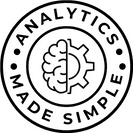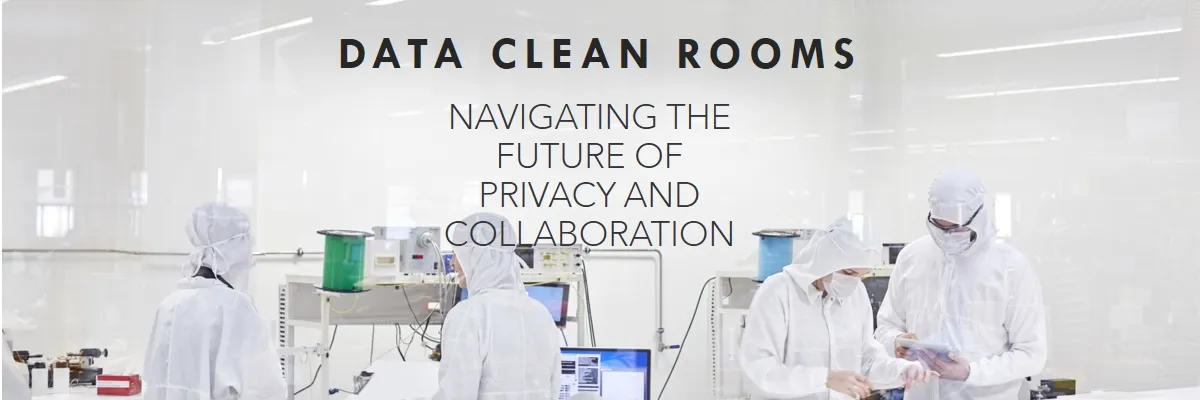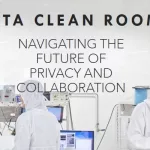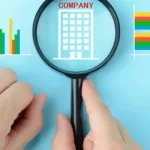We live in an age of data fragmentation. Thanks to siloed systems and disjointed processes, customer and business data gets scattered in bits and pieces across the enterprise. Even as data volumes explode, gaining a trusted 360-degree view remains virtually impossible. What if I told you there is a solution to tap into the power of unified data while still preserving privacy? Enter data clean rooms.
Table of Contents
Demystifying Data Clean Rooms
In simple terms, a data clean room provides a protected space where companies can consolidate, organize, and analyze data from various lines of business systems and external sources. Powerful privacy controls prevent direct access to personally identifiable information. At the same time, cleansed datasets enable deriving aggregated insights to drive business value.
The key components of a data clean room include secure access protocols, encrypted connections, and carefully defined permissions. These elements work together to create a space where data collaboration can flourish without the risk of data breaches or privacy violations.
As businesses increasingly rely on data for decision-making, the need for secure collaboration becomes more pronounced. Data clean rooms provide a solution to this challenge by offering a controlled and protected space for organizations to extract valuable insights from their data without compromising confidentiality.
The Evolution of Data Privacy
To truly appreciate the importance of data clean rooms, it’s essential to understand the historical context of data privacy. Over the years, high-profile data breaches and the implementation of stringent regulations like GDPR have highlighted the vulnerabilities in traditional data-sharing practices.
The rise of data breaches has made it clear that businesses need a more secure way to collaborate on sensitive information. Data clean rooms have evolved as a response to this need, providing a structured and privacy-focused approach to data analysis.
The journey from early data privacy concerns to the establishment of data clean rooms reflects a growing awareness of the value of personal and sensitive information. As organizations strive to comply with regulations and build trust with consumers, the adoption of secure collaboration methods like data clean rooms becomes imperative
Implementing Data Clean Rooms in Practice
For organizations considering the adoption of data clean rooms, the first step is understanding how to set up a secure environment. First, let’s take a look at some of the capabilities that a clean room should enable.
Key capabilities offered by modern data clean rooms include:
- Data integration: Ingest, normalize, and merge data across diverse systems into unified datasets for downstream use.
- Privacy preservation: Provide aggregated analysis using obfuscation, tokenization, encryption, anonymization, and auditing capabilities while restricting PII access.
- Analytics enablement: With cleansed data sets, execute analytics encompassing descriptive to predictive use cases.
- Orchestration: Schedule and manage data integration, protection, and analytics workflows from ingestion to insights delivery.
For organizations considering the adoption of data clean rooms, the first step is understanding how to set up a secure environment. This involves defining access protocols, establishing encrypted connections, and implementing stringent permission controls.
Access protocols should be designed to ensure that only authorized personnel can enter the data clean room. This may involve multi-factor authentication and other identity verification measures. Once inside, participants should have access only to the specific data sets required for collaboration, minimizing the risk of unauthorized access.
Encrypted connections play a crucial role in securing data transfers within the clean room. By encrypting data in transit, organizations can prevent eavesdropping and ensure that sensitive information remains confidential. This is particularly important when collaborating with external parties or partners.
Permissions should be carefully defined to restrict access based on roles and responsibilities. Not all participants need access to all data sets, and permissions should be granular enough to reflect this. Regular audits and reviews of permissions help maintain the integrity of the clean room environment.
The Process
How do data clean rooms deliver these capabilities under the hood? Let’s analyze a typical workflow:
- Ingest data from source systems like CRM, ERPs, and transactional databases along with external third-party data.
- Cleanse, standardize, match, and enrich data sets while encrypting personally identifiable information.
- Store the processed datasets in a protected data environment accessible only via privacy controls.
- Data scientists analyze the data using visualization, BI, and AI inside the controlled clean room environment.
- Share aggregated analytics-based insights with business teams to enable data-driven decisions across use cases.
Now that you know what data clean rooms are, let’s explore where they have a tremendous impact.
Where Data Clean Rooms Make an Impact
Here are two high-value business use cases where data clean rooms can work wonders:
Customer 360 Insights
To cope with intensifying competition and skyrocketing CX standards, customer 360 projects have become a survival necessity. Data clean rooms allow enterprises to build holistic customer profiles by connecting data scattered across product teams, stores, web & mobile apps, marketing systems, sales platforms, and support desks.
By consolidating data while upholding compliance standards, rich CX-enhancing insights can be uncovered. We are talking microsegment creation, predictive lead scoring, and personalized recommendations – the possibilities are vast once siloed data obstacles are overcome!
M&A Data Integration
During high-value mergers and acquisitions, data integration is pivotal for synergies but intensely difficult due to privacy limitations. Data clean rooms enable secure collaboration so merger partners can selectively analyze each other’s datasets to identify integration priorities and optimization opportunities pre and post-acquisition.
This allows deal stakeholders to have objective data-led discussions on tricky integration decisions around products, operations, technologies, etc. Accelerating time-to-value while respecting compliance boundaries.
Deploying Data Clean Rooms Successfully
When it comes to rolling out data clean rooms, two aspects are critical, technology and adoption. Let’s discuss key considerations:
Technology Selection
Assemble modular solutions to equip your data clean room environment leveraging cloud scale. Core components include:
- Data processing & storage: Cloud data warehouses like Snowflake eliminate infrastructure headaches while benefiting from elasticity for seasonal data spikes.
- Orchestration engine: Leverage robust platforms to manage clean room workflows end-to-end from data intake to insight delivery.
- Privacy & governance controls: To enforce fine-grained usage policies, access controls, and compliance establish guards like anonymization, query auditing, and watermarking data before analysis.
Getting the technology mix right from day one pays dividends in the long run.
Adoption Best Practices
While data clean rooms provide the enabling technology, fostering adoption across the business involves tactical nurturing including:
- Executive alignment so all levels enthusiastically back the data clean room initiative with funding and participation.
- Encouraging collaborative analytics between departments like marketing, finance, and operations vs data hoarding behavior.
- Upskilling employees on privacy preservation and data ethics providing proper certifications.
- Patience during early phases as teams adjust workflows around centralized data access avoiding frequently hit walls.
With enabling technology and enterprise-wide support, data clean rooms can transform fragmented information into unified insights!
Overcoming Implementation Challenges
While the benefits of data clean rooms are substantial, implementing them comes with its own set of challenges. Navigating regulatory compliance issues, addressing technological complexities, and ensuring seamless integration with existing systems are common hurdles that organizations may face.
Regulatory compliance is a critical consideration when implementing data clean rooms, especially in industries with stringent privacy requirements. Understanding and adhering to regulations such as GDPR is essential to avoid legal complications and maintain the trust of stakeholders.
Technological complexities may arise from the integration of diverse data sources, differing data formats, or the need for real-time collaboration. Overcoming these challenges requires a comprehensive understanding of the organization’s data landscape and the deployment of suitable technologies.
Integration with existing systems, such as data warehouses and analytics platforms, can pose challenges during implementation. Compatibility issues and data synchronization problems may arise, requiring careful planning and execution to ensure a smooth transition to the data clean room environment.
The Future Landscape of Data Clean Rooms
Emerging Trends and Technologies
As technology continues to evolve, so does the landscape of data clean rooms. Emerging trends and technologies are shaping the future of secure data collaboration. One such trend is the integration of advanced encryption techniques, including homomorphic encryption, which allows computations to be performed on encrypted data without decrypting it.
Another emerging technology is the incorporation of artificial intelligence (AI) for enhanced data analysis within clean room environments. AI algorithms can identify patterns and generate insights without compromising the privacy of individual data points, opening up new possibilities for collaborative research and analysis.
The evolution of data clean rooms also involves the development of more user-friendly interfaces and seamless integration with popular analytics tools. This trend aims to make data clean rooms accessible to a broader audience, empowering organizations of all sizes to harness the benefits of secure collaboration.
The Global Regulatory Outlook
The regulatory landscape plays a pivotal role in shaping the future of data clean rooms. As privacy regulations continue to evolve globally, organizations must stay informed and adapt their clean room strategies accordingly. The expansion of regulations similar to GDPR and the introduction of new data protection laws create both challenges and opportunities for businesses.
Ensuring compliance with these regulations is not only a legal requirement but also a fundamental aspect of building trust with customers and stakeholders. Organizations that proactively address privacy concerns and adhere to the highest standards of data protection will be better positioned to navigate the evolving global regulatory landscape.
Summary
In today’s globally integrated digital economy, leveraging siloed datasets handicaps competitive advantage. With mountains of fragmented data, what organizations need is a protected junction to bring information together from across functions, channels, and product lines.
This is what Data Clean rooms aim to solve, they represent a crucial step forward in balancing the scales between data collaboration and privacy. As organizations increasingly recognize the importance of secure collaboration, the adoption of data clean rooms becomes a strategic imperative. By understanding the basics, overcoming implementation challenges, and exploring real-world applications, businesses can position themselves at the forefront of a data revolution.
As we look to the future, the evolving landscape and emerging technologies promise even greater strides in the realm of data clean rooms. The integration of advanced encryption, artificial intelligence, and user-friendly interfaces will further enhance the capabilities of data clean rooms, making them indispensable tools for organizations seeking to unlock the potential of collaborative data analysis without compromising privacy.
Hope this was helpful and as usual!
Cheers!
J
Check out the merch store for some cool analytics-inspired gear!

-
 Data Unicorn Mouse Pad$18.00
Data Unicorn Mouse Pad$18.00 -
 Can You See My Screen Coffee Mug$22.00 – $25.00
Can You See My Screen Coffee Mug$22.00 – $25.00 -
 Cheap Good Fast Shirt$25.00 – $28.00
Cheap Good Fast Shirt$25.00 – $28.00
Sources:
- https://www.montecarlodata.com/blog-what-are-data-clean-rooms/
- https://aws.amazon.com/blogs/big-data/category/analytics/aws-clean-rooms/
- https://aws.amazon.com/blogs/aws/aws-clean-rooms-now-generally-available/
- https://clearcode.cc/blog/data-clean-room/
- https://www.infosum.com/blog/data-clean-rooms-shaping-the-future-of-business












